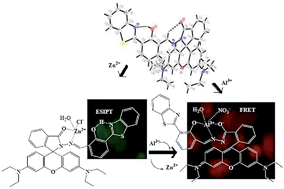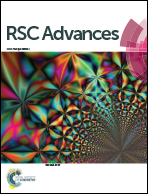FRET based ‘red-switch’ for Al3+ over ESIPT based ‘green-switch’ for Zn2+: dual channel detection with live-cell imaging on a dyad platform†
Abstract
Our designed chemosensor, rhodamine-HBT-dyad (RHD), selectively detects two biologically important ions (Al3+ and Zn2+) at two different wavelengths (‘naked-eye’ colors red and green, respectively) through two different mechanisms (i.e. FRET and ESIPT) at ppm level. The sensor can also detect the Al3+ ion through displacement of the Zn2+ ion in vivo.


 Please wait while we load your content...
Please wait while we load your content...